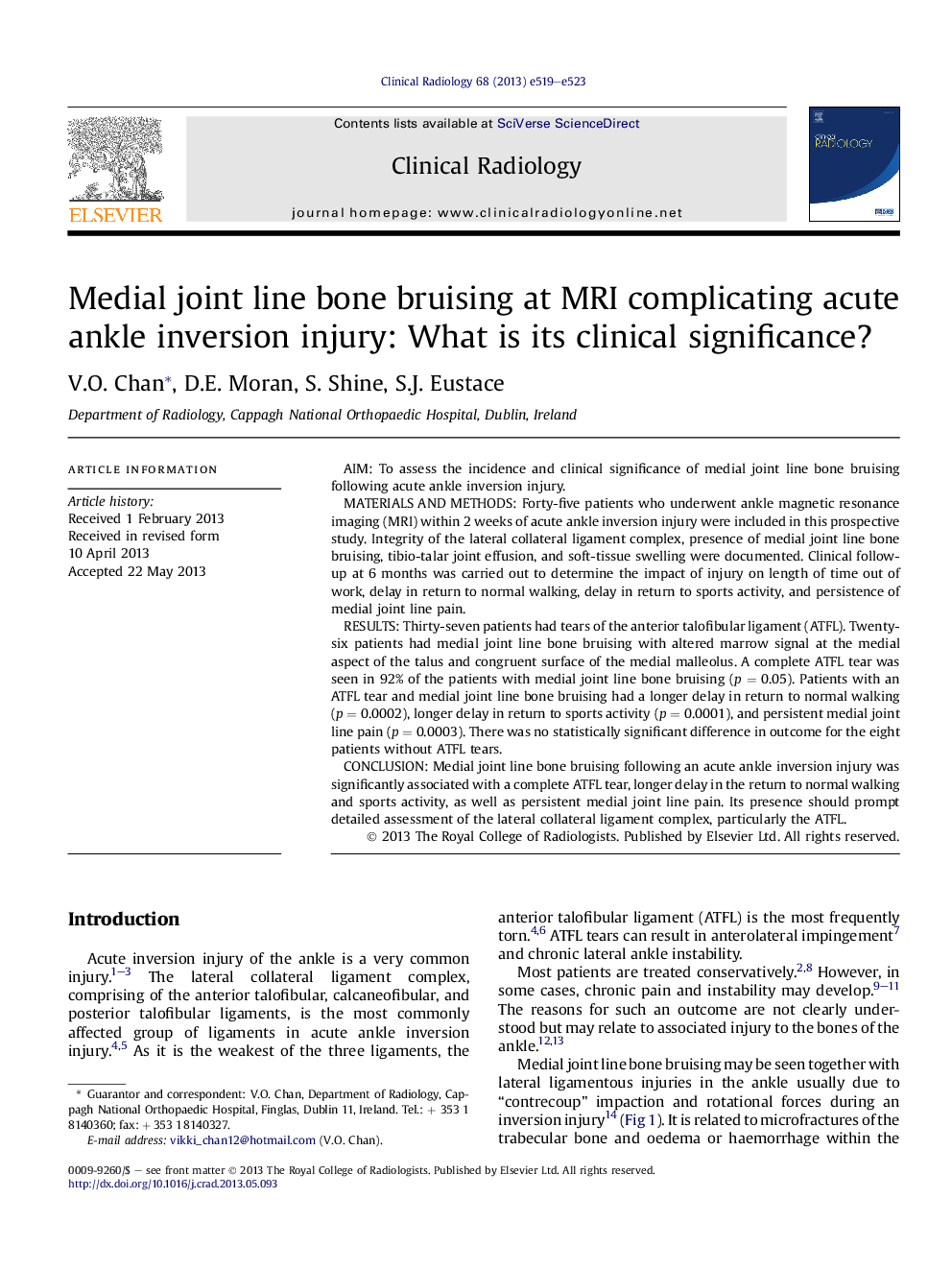| Article ID | Journal | Published Year | Pages | File Type |
|---|---|---|---|---|
| 3982462 | Clinical Radiology | 2013 | 5 Pages |
AimTo assess the incidence and clinical significance of medial joint line bone bruising following acute ankle inversion injury.Materials and methodsForty-five patients who underwent ankle magnetic resonance imaging (MRI) within 2 weeks of acute ankle inversion injury were included in this prospective study. Integrity of the lateral collateral ligament complex, presence of medial joint line bone bruising, tibio-talar joint effusion, and soft-tissue swelling were documented. Clinical follow-up at 6 months was carried out to determine the impact of injury on length of time out of work, delay in return to normal walking, delay in return to sports activity, and persistence of medial joint line pain.ResultsThirty-seven patients had tears of the anterior talofibular ligament (ATFL). Twenty-six patients had medial joint line bone bruising with altered marrow signal at the medial aspect of the talus and congruent surface of the medial malleolus. A complete ATFL tear was seen in 92% of the patients with medial joint line bone bruising (p = 0.05). Patients with an ATFL tear and medial joint line bone bruising had a longer delay in return to normal walking (p = 0.0002), longer delay in return to sports activity (p = 0.0001), and persistent medial joint line pain (p = 0.0003). There was no statistically significant difference in outcome for the eight patients without ATFL tears.ConclusionMedial joint line bone bruising following an acute ankle inversion injury was significantly associated with a complete ATFL tear, longer delay in the return to normal walking and sports activity, as well as persistent medial joint line pain. Its presence should prompt detailed assessment of the lateral collateral ligament complex, particularly the ATFL.
